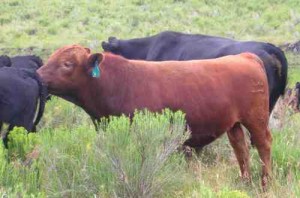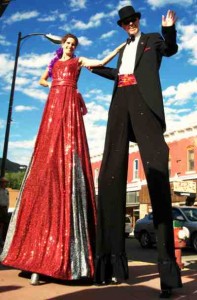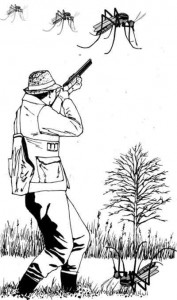Essay by Patrick Hannigan
Tourism – August 2007 – Colorado Central Magazine
“How far is it to Harts Pass?” a tourist couple once asked me. I told them it was about 20 miles. “How far is it back?” they asked.
That natural selection has not rendered tourists extinct seems a mystery that defies evolution. And if you believe God created tourists, you’ve probably wondered, “What was He or She thinking?”
The answer spans the gap between Charles Darwin and Creationism. Maybe tourists are a plague we must survive in order to evolve; tourists might also be an apocalyptic tribulation on par with a plague of locusts.
The tourist’s dumb question reminded me of my first tourist-related job in Estes Park, Colorado. Barely 15, I was a “fishing guide” at Trout Haven, a private pond hardly larger than a swimming pool and stocked with 50,000 voracious trout. My job was to bait tourists’ hooks, unhook their fish, re-bait their hooks, and clean their catch.
One day, an urbane cowboy from Texas and his fur-clad wife pulled up in a white Cadillac, complete with a set of longhorn steer horns attached to the grill. The Touristii texicani wanted to go shopping, so they dropped off their child with me. The couple returned an hour or two later, dismayed to discover that their offspring had caught around $300 worth of trout. Under the hot July sun, we packed the five boxes of fish into the trunk of their car. I can only imagine the smell when they arrived home a week later.
Today, I live in the North Cascades of Washington in a small mountain community called the Methow Valley. Tourism is a vital part of the local economy, but some think the tourist population is out of control. When informed that tourist season had begun, one grouchy old-timer asked, “Where do a I buy a license?”
Many species of touristii can be identified by their unusual driving habits. Either they speed along as if still driving in urban combat conditions, or they don’t go anywhere at all. Upon spotting a deer, they typically skid to a stop and abandon their RVs and SUVs close to the middle of the road. Camcorders in hand, they pile out to document the event. The resulting traffic snarl is known locally as a “deer jam.” Given their short attention spans, tourists typically become bored after seeing a few hundred deer, which outnumber people by a 4-1 ratio in these parts. “When do deer turn into elk?” they ask. Silly question: everybody knows the answer is April 1.
Since I sometimes work as a bartender, tourists get to ask me a lot of strange questions. Perhaps the most common is “What do people do here?” I think they ask this because they can’t imagine anything happening when they are not around to see it. As I pour them beverages, I tell them they are witnessing the number-one local industry in action: catering to tourists.
“Yeah, but how do people make a living?” they ask. A perplexing question indeed. I’m still trying to figure out the answer. Traditionally, tourist season here in the valley was when everyone had three jobs but no time. During the off-season, people had time, but no money. Now, tourist season seems to last all year, yet it seems nobody ever has either money or time.
SOME PEOPLE MAY SAY it’s wrong to ridicule the hand that barely feeds us. Obviously, those people have not labored in the salt mines of the so-called “tourist industry.” Otherwise they would understand that laughing at tourists is required to maintain some semblance of sanity.
In poking fun at tourists, we are simply making light of the foibles of human nature so readily exposed by travel. Locally, many now refer to tourists as “tourons,” which is a contraction of “tourist” and “moron.”
For a visual example of a touron, look in the mirror. Nobody is exempt, because all of us become tourists as soon as we step outside the place we call home. For some reason, that step is usually accompanied by a devolution into a blissful state of touronic cluelessness.
Yes, tourons are people too, but only because all people are potential tourons.
Patrick Hannigan is a contributor to Writers on the Range, a service of High Country Newsin Paonia, Colorado (www.hcn.org). He is a veteran of the tourist industry and lifelong touron who resides in Twisp, Washington.



